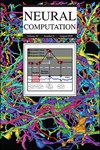跨类别变换的鲁棒性:鲁棒性是由不变的神经表示驱动的吗?
IF 2.7
4区 计算机科学
Q3 COMPUTER SCIENCE, ARTIFICIAL INTELLIGENCE
引用次数: 5
摘要
深度卷积神经网络(DCNN)在将变换(例如模糊或噪声)包括在训练集中时,在识别变换下的对象方面表现出了令人印象深刻的鲁棒性。解释这种稳健性的一个假设是,DCNN开发出不变的神经表示,当图像被变换时,这些神经表示保持不变。然而,这一假设在多大程度上成立是一个悬而未决的问题,因为对变换的鲁棒性可以通过不同于不变性的性质来实现;例如,网络的一部分可以专门用于识别变换的图像或未变换的图像。本文研究了不变神经表示出现的条件,利用它们促进了对训练分布之外的变换的鲁棒性。具体来说,我们分析了一种训练范式,其中在训练过程中只看到一些对象类别被转换,并评估DCNN是否对未被转换的类别之间的转换具有鲁棒性。我们对最先进的DCNN的结果表明,不变神经表示并不总是驱动对变换的鲁棒性,因为即使在没有不变神经表示的情况下,网络对训练过程中变换的类别也表现出鲁棒性。只有当训练集中变换类别的数量增加时,不变性才会出现。这种现象在局部变换(如模糊和高通滤波)中比几何变换(如旋转和细化)更为突出,后者需要改变对象的空间排列。我们的研究结果有助于更好地理解深度学习中的不变神经表征及其自发出现的条件。本文章由计算机程序翻译,如有差异,请以英文原文为准。
Robustness to Transformations Across Categories: Is Robustness Driven by Invariant Neural Representations?
Deep convolutional neural networks (DCNNs) have demonstrated impressive robustness to recognize objects under transformations (e.g., blur or noise) when these transformations are included in the training set. A hypothesis to explain such robustness is that DCNNs develop invariant neural representations that remain unaltered when the image is transformed. However, to what extent this hypothesis holds true is an outstanding question, as robustness to transformations could be achieved with properties different from invariance; for example, parts of the network could be specialized to recognize either transformed or nontransformed images. This article investigates the conditions under which invariant neural representations emerge by leveraging that they facilitate robustness to transformations beyond the training distribution. Concretely, we analyze a training paradigm in which only some object categories are seen transformed during training and evaluate whether the DCNN is robust to transformations across categories not seen transformed. Our results with state-of-the-art DCNNs indicate that invariant neural representations do not always drive robustness to transformations, as networks show robustness for categories seen transformed during training even in the absence of invariant neural representations. Invariance emerges only as the number of transformed categories in the training set is increased. This phenomenon is much more prominent with local transformations such as blurring and high-pass filtering than geometric transformations such as rotation and thinning, which entail changes in the spatial arrangement of the object. Our results contribute to a better understanding of invariant neural representations in deep learning and the conditions under which it spontaneously emerges.
求助全文
通过发布文献求助,成功后即可免费获取论文全文。
去求助
来源期刊

Neural Computation
工程技术-计算机:人工智能
CiteScore
6.30
自引率
3.40%
发文量
83
审稿时长
3.0 months
期刊介绍:
Neural Computation is uniquely positioned at the crossroads between neuroscience and TMCS and welcomes the submission of original papers from all areas of TMCS, including: Advanced experimental design; Analysis of chemical sensor data; Connectomic reconstructions; Analysis of multielectrode and optical recordings; Genetic data for cell identity; Analysis of behavioral data; Multiscale models; Analysis of molecular mechanisms; Neuroinformatics; Analysis of brain imaging data; Neuromorphic engineering; Principles of neural coding, computation, circuit dynamics, and plasticity; Theories of brain function.
 求助内容:
求助内容: 应助结果提醒方式:
应助结果提醒方式:


